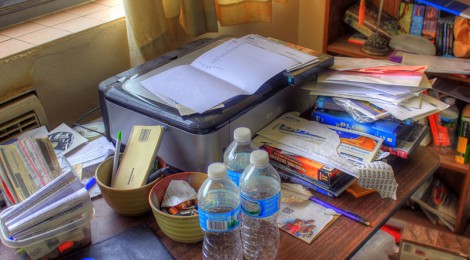We have Meatless Mondays, Taco Tuesdays, and now we have a digital diet day: Tabless Thursday. Dr. James Hamblin at The Atlantic makes a compelling argument for why we should single task. The idea is to use our browsers in a way we don’t typically use them—one window at a time. Considering the amount of time we spend plugged into the internet, keeping distractions at bay may only be possible by going unitab, even if we try to qualify our tab addiction as multitasking. As Dr. Hamblin points out, multitasking is actually just switching from one task to another. A study from Stanford sought to find out why some people seem to be so much better at multitasking than others. It turns out that they were only giving the appearance of being master multitaskers, but didn’t actually perform better at concentration tests than light multitaskers. While there is more research to be done, there is a possibility that prolonged multitasking may even damage cognitive control.
The idea of multitasking is also related to keeping digital workspaces free of distractions in order to focus intensely on a single task. Digital clutter is a real thing, but the outward signs are less obvious than physical clutter. It’s easy to rapidly acquire digital clutter because of the rate at which new information becomes available. Plus, we have ability to hide the mess by simply closing our laptops or logging out of our workstation, making digital clutter easy to ignore.
Ever read a self-organization book like Getting Things Done, by George Allen? It’s useful in an analog sort of way, but ultimately dissatisfying because the message is that organization is never a finished task but an ongoing chore. Getting back to Tabless Thursday, and how this is all related; if we’re distracted by stuff (or files, or browser tabs) we’re essentially attempting to multitask. Clearing away distractions means we’re freeing up time and energy instead of handling the same task or object over and over again.
This is not a popular position. Academics love quoting Albert Einstein to defend messy workspaces. “If a cluttered desk is a sign of a cluttered mind, of what, then, is an empty desk a sign?” In fact, Abrahamson & Freedman (2007) use this quote as a starting point for an entire book, A perfect mess: The hidden benefits of disorder. That could be one reason that there isn’t much empirical research about the outcomes of personal organization or tidiness. Given the number of geniuses with messy desks, it could be that the phenomenon is not so simple. One recent study looked specifically at the outcomes of working in in a neat space vs. a disorganized one. The findings suggest that clean spaces correlate with healthy choices, generosity and conventional decisions, while messy spaces encourage creativity and a willingness to try new things. So maybe the key is that we should try doing both under different circumstances; limit distractions when it’s time to get work done, and welcome distractions (or lots of tabs) when we’re thinking creatively.
Evidence shows that dividing our focus between multiple tasks can cause stress and lead to poor professional outcomes. It’s hard to argue with the logic that focusing attention on one task will lead to completion of that task, but how do you get there if you are used to having 28 tabs open at once? If you use Chrome as a browser, xTab lets you limit the number of tabs you can have open at once, and Firefox has a similar extension. There is no way to limit tabs in IE. I’m currently using xTab in Google Chrome, and while I’m not down to just one tab, I’m getting there. Today, my limit is 5, and I already feel more focused. Maybe I’ll celebrate by enjoying Thirsty Thursday after a productive day.


